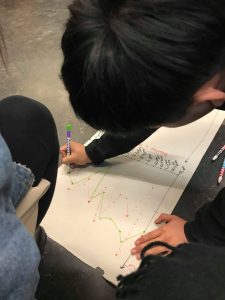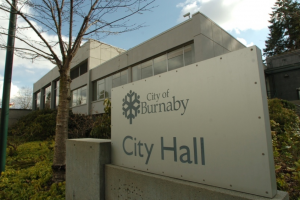Look at our farmers markets today, bursting with heritage breeds and heirloom varieties, foods that were once abundant when we were an agricultural nation, but that we have lost touch with. Bringing all these back helps us connect to our roots, our communities and helps us feed America the proper way.
– Jose Andres
Where are we now?
Since our first partner meeting we are finally back with another post. We started off our term with a strong focus on making a difference with all the various bits of pieces of knowledge acquired from LFS 350 lectures, Tara’s vast archives of previous Artisans Farmers Market events and our own shared pool of expertise among members. We had the opportunity to exercise our knowledge from various courses we took in UBC on the topics of statistical analysis and research methods when creating our survey. It was critical to generate data that can be quantified with consideration of qualitative observations. We revisited interviewing techniques, searched for potential areas of biases and made ethical considerations of protecting anonymity of participants.
OUR ACHIEVEMENTS SO FAR (SINCE BLOG 1)

Group 24: LFS 350 Tutorial Emotions & Progress Chart
- Completed drafts of our online and in person survey forms using qualtrics which will be distributed through an online format and hard copy format
- We are currently waiting for Tara Immell to provide her feedback and revisions to the our questions and ultimately the approval to commence surveying
- We have determined our target locations to conduct the survey and have received approval. The locations that we will be surveying at are:
- 1) Deer Lake United Church
- 2) Burnaby City Hall
- 3) Burnaby Central Secondary School
- 4) Burnaby Village Museum
- 5) Shadbolt Centre for Arts
- 6) Burnaby Art Gallery
- Tara Immell mentioned that their target customers for this year are the elderly and children. Thus, we have decided to survey at the Burnaby Central Secondary School and Deer Lake United Church to receive data from such target populations
- Developed a better understanding of how to create and conduct a customer outreach survey.
- Gain insight on the significance of residential/local community surveying that can lead to the creation of customer profiles and tailored loyalty programs
- Implemented questions in the survey that would achieve all 4 types of data measurements (categorical, ordinal, interval, and ratio) to obtain a wide set of data.
- Collaborated as a group to create a knowledge, skills, and emotions progress chart that assessed our current position regarding our scheduled deadlines for the project
- Finally, we have finished our formal proposal report which highlights the significance of our project as well as our objectives, methods, expected outcomes and the timeline of our objectives.
UPCOMING OBJECTIVES AND STRATEGIES
- Our main priority is to finalize our survey questions with Tara in order to begin our data collection which we can utilize to develop customer profiles, tailored customer loyalty program, and specific categories of attractions that engage the community’s interest
- Tara Immell will be sending us a list of individuals who have subscribed to the Burnaby Artisan Farmers Market newsletter emailing list on March 3rd. From this list we will be sending these people a link to the survey on March 5th
- Release online version of the survey to Burnaby Artisans Farmers Market facebook page which will be determined after our third meeting with Tara on March 5th.
- Conduct in-person surveys at targeted locations
- From March 10-20th we will be synthesizing data and generating statistics in the form of pie charts and bar graphs by using Microsoft Excel
- Once our statistical data is compiled we will be conducting a statistical analysis to curate a new marketing strategy to attract new customers and retain old customers through loyalty programs
- Convey the information gained and the proposed ideas through an info-graphic
MOMENT OF SIGNIFICANCE
WHAT?

February 25, 2018, from http://www.dluc.ca/WP/wp-content/uploads/2014/09/P1050615
-1010×420.jpg
- Tara would like us to engage and create both qualitative and quantitative statistical data on customer opinions and profiles to better suit our upcoming marketing strategy. Thus, our group proposed the idea of conducting focus group interviews that would allow us to engage with the target market on a personal level. After our second meeting with our community partner, Tara Immell, we realized that conducting focus group interviews would not be feasible due to the inability to find relevant people and conflicts with booking sessions. As a result, we decided to focus on in person and online surveying at target locations and the market’s facebook page that would be best at reaching out to community members that attend the farmer’s market, specifically the elderly and children. We hope to have community member opinions act as social capital and be at the forefront of our actions. By incorporating asset-based community development principles into our project we hope to take a citizen-centered approach and be attentive to customer wants (Mathie & Cunningham, 2003). As a result, this will build stronger customer relations within Artisans Farmers Market Society and drive economic growth within the local community. However, the farmer’s market is closed during this time of the year and we fear that we will lack relevant survey participants to provide relevant statistical data to create customer profiles.
SO WHAT

Now that we have narrowed down our method of obtaining data, our understanding and perspective of the situation has cleared up. We believe that a sample size that is not representative of the entire community will prevent us from conducting an accurate and effective evaluation of the community members of the Artisans Market, as well as prevent us from implementing successful strategies in the future. Being able to conduct a market research survey on everyone in our target population is not practical, therefore it is very important that the people that we interview is representative of the target population. Representative samples are essential because they eliminate the possibility of bias from over-representation from population groups that are not part of our target population and as result there may be under-representation of the relevant population of interest (Austin Research, 2014). One of the underlying themes of the Community-Based Experiential Learning project is to incorporate and promote food justice concepts. From successful surveying techniques, our group hopes to understand barriers to fresh food accessibility, cultural diversity and affordability of farmers markets among this group. This is best achieved when representative samples are obtained.
NOW WHAT?

WHAT TO LOOK FORWARD TO?
Once we receive feedback from Tara on our survey, we will be travelling out to the targeted locations and conduct our surveys. We are extremely excited and can not wait to see some of the results. Once we have gathered our data, our group is going to conduct a group Internal Anonymous Feedback which focuses on areas of strength and areas that require improvement. We strongly believe that keeping our group on the same page will greatly improve our cohesiveness and help us better understand and improve our group’s dynamics for the upcoming infographic presentation! If you’re interested about our progress, join us on our journey. You can check out our progress in our blog post #3
REFERENCES
Allen, P. (2008). Mining for justice in the food system: perceptions, practices, and possibilities. Agriculture and Human Values, 25(2), 157–161. Retrieved through the UBC Library Website.
Mathie, A., & Cunningham, G. (2003). From clients to citizens: Asset-based Community Development as a strategy for community-driven development. Development in Practice, 13, 474–486. Retrieved through the UBC Library Website.
The importance of representative samples and how to get them. (2014, July 30). Retrieved February 26, 2018, from https://austinresearch.co.uk/the-importance-of-representative–samples-and-how-to-get-them/
